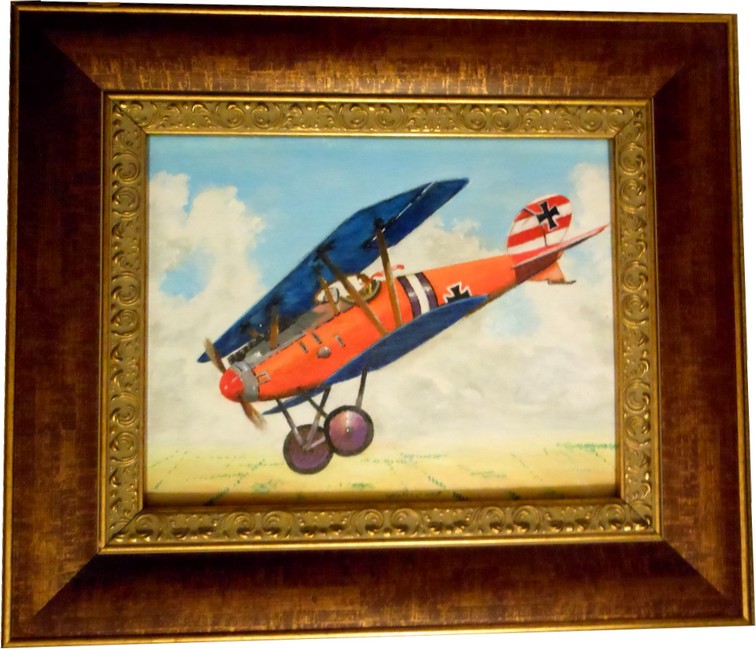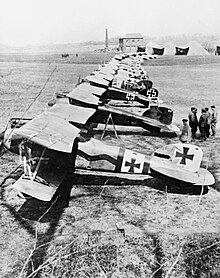by Jack
Painted 10-22-19, by Jack Lee, acrylic on canvas 12X14. All comments welcome.

The Albatros D.III was a biplane fighter aircraft used by the Imperial German Army Air Service (Luftstreitkräfte) during World War I. A modified licence model was built by Oeffag for the Austro-Hungarian Air Service (Luftfahrtruppen). The D.III was flown by many top German aces, including Wilhelm Frankl, Erich Löwenhardt, Manfred von Richthofen, Karl Emil Schäfer, Ernst Udet, and Kurt Wolff, and Austro-Hungarian ones, like Godwin von Brumowski. It was the preeminent fighter during the period of German aerial dominance known as “Bloody April” 1917.
Albatros D.III fighters of Jasta 11 at Douai, France. The second closest aircraft was one of several flown by Manfred von Richthofen
Development of the prototype D.III started in late July or early August 1916.[1] The date of the maiden flight is unknown, but is believed to have occurred in late August or early September.[1] Following the successful Albatros D.I and D.II series, the D.III utilized the same semi-monocoque, plywood-skinned fuselage. However, at the request of the Idflieg (Inspectorate of Flying Troops), the D.III adopted a sesquiplane wing arrangement broadly similar to the French Nieuport 11. The upper wingspan was extended, while the lower wing was redesigned with reduced chord and a single main spar. “V” shaped interplane struts replaced the previous parallel struts. For this reason, British aircrews commonly referred to the D.III as the “V-strutter.”
After a Typenprüfung (official type test) on 26 September 1916, Albatros received an order for 400 D.III aircraft, the largest German production contract to date.[2] Idflieg placed additional orders for 50 aircraft in February and March 1917.[3]


Excellent.
This is really quite beautiful. I suggest that the wings appear to thin and the right wheel be smaller in diameter to suggest perspective and depth.